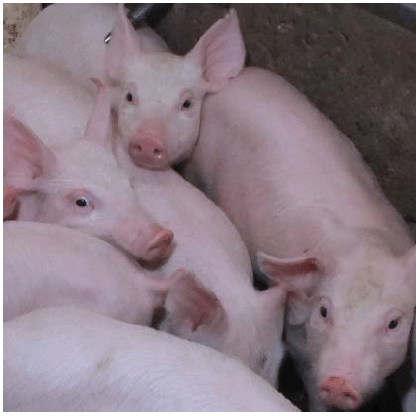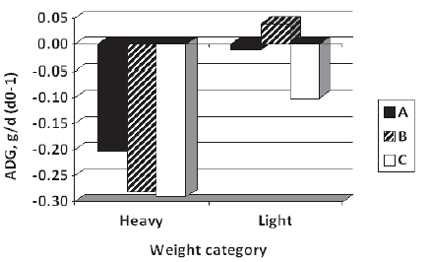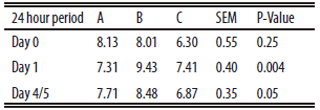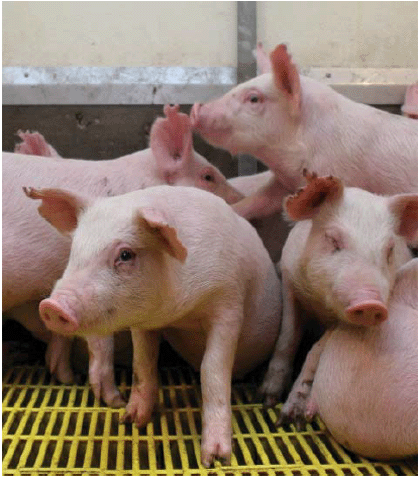



Development of Diets for Low Birth-Weight Piglets to Improve Post-Weaning Growth Performance and Optimise Net Returns to the Producer
Phase 1 diets could be used more efficiently and cost-effectively by targeting it specifically to the lighter pigs at weaning, according to A.D. Beaulieu, J. Shea and D. Gillis of the Prairie Swine Centre in its 2010 Annual Research Report.Summary
An experiment which utilised 17 weeks of production was designed to examine the response of weanling pigs to diet complexity. Piglets were divided at weaning (28 days) into heavy or light body weights and fed either a simple diet for 14 days or a complex diet for one or four days, followed by the simple diet. Feeding the complex diet for four days improved growth performance for the first week following weaning when compared to feeding it for one day or not at all. Pigs which were lighter at birth, lost less body weight at weaning and showed a greater positive response to the complex diet than heavier birth weight pigs. Phase 1 diet could be used more efficiently and cost effectively by targeting it specifically to the lighter pigs at weaning.
* "Light weight piglets approach the feeder sooner after weaning than heavier pigs and made more visits to the feeder in the first four days" |
Introduction
Variability in growth is a cost to commercial pork production, especially those utilising all-in-all-out production systems. In a recent study at Prairie Swine Centre with a large number of litters, the authors observed an average birth weight of 1.4kg, however, the range was from 0.40kg to 2.50kg. The smaller birth weight piglets in this study - defined as piglets 0.85 grams or less at birth - failed to demonstrate any evidence of compensatory growth, and their rate of gain lagged behind their larger cohorts throughout all stages of growth, resulting in an additional 10 days to reach market weight.
Weaning diets, which are expensive, are designed to safely transition the piglet from the liquid milk diet to a solids diet. They are typically complex and contain ingredients providing benefits beyond basic nutrient consideration. The researchers hypothesised that light-weight piglets would show a relatively greater response to a high-quality weaning diet, specifically one containing blood products, than their heavier birth-weight counter-parts. This would reduce overall variability at nursery exit.
The feed must obviously be consumed to provide any benefit and it takes some piglets more than 24 hours to commence consumption of solid food. The overall objective of this experiment was to optimize the dietary regime fed to piglets immediately post-weaning for greatest overall net return. The researchers focused on adaptation to the solid feed immediately post-weaning.
Experimental Procedures
Diets were formulated to meet or exceed nutrient requirements for piglets of this age and weight (NRC 1998). The 'complex' diet included spray-dried whey, plasma and blood meal and fish meal (Table 1).

There were three dietary treatment regimes, and two weight group treatments. The three dietary regimes consisted of a simple or a complex diet offered as. A: Complex diet days 0–1, simple diet, day 2-14, B: Complex diet days 0–4, simple diet day 5-14, C: Simple diet day 0–14. Day 0 is weaning (Table 2). Individual body weight and feed intake was determined on days 0, 2, 4, 7 and 14.

Each week, for 17 weeks, the entire weaning group was weighed and pigs ranked according to body weight within gender. The 24 heaviest and 24 lightest pigs were assigned to a pen, four pigs per pen. Pens were then randomly assigned to a treatment. Thus each week there were six pens of the heaviest and six pens of the lightest pigs and two pens per treatment per weight group. Care was taken to ensure that the time between the removal of the piglets from the sow and access to feed in the nursery was the same for all piglets and all weeks.

Video-cameras set up over the pens recorded individual feeder approach which was defined as a pig placing their head over and down into the feeder. Pens were recorded for the 24 hours following each diet change (days 0-1, 1-2 and 4-5). Piglets were numbered on their backs for identification. To accommodate the video-recording, lights were on continuously.
Results and Discussion
This experiment used approximately 40 per cent of each weaning group; the 20 per cent heaviest and lightest were selected from each weaning group. Light piglets weighed almost 4kg less (40 per cent) than their heavier littermates on day 0 (P<0.0001) and 25 per cent less on day 14 post-weaning (P<0.0001).

All piglets lost weight over the first 24 hours following weaning, however, body weight loss was less in the light-weight piglets (Table 3). This was true even when body weight loss was expressed as a proportion of body weight [(ADG/d0 BW)*100) = 2.5 per cent versus 0.3 per cent for heavy versus light piglets, respectively]. Average daily gain of the light weight piglets was approximately 13 per cent greater than their heavier litter-mates throughout the trial (P<0.0001). Despite this increased rate of gain, heavier pigs weighed 3.25kg more - almost 35 per cent - than the light-weight pigs at weaning.

*Interaction between body weight and diet, P=0.01 (shown in Figure 1)
Piglets on treatment C, receiving the 'simple' diet, lost more bodyweight and had reduced feed intake immediately following weaning (days 0-1) than those on treatments A or B. Switching from the complex to the simple diet on day 4 (treatment B) did not have an adverse effect on gain or feed intake in the following days. During the second week of the experiment, dietary treatment had minimal effects on either feed intake or body weight gain and by day 14, body weight was comparable, regardless of treatment (Table 4).

*Interaction between body weight and diet, P=0.01 (shown in Figure 1)
The light-weight pigs responded more to dietary treatment on day 0 than their heavier litter-mates (Figure 1). In fact, light-weight piglets receiving the complex diet immediately following weaning maintained their body-weight over the initial 24 hours. This contrasts with the light-weight pigs receiving the simple diet and the heavy pigs, receiving either simple or complex diets.

BW × treatment interaction, P<0.01, ADG, P<0.03, ADFI
Following weaning, the light-weight piglets immediately began approaching the feeder and throughout the initial 4 days of the experiment visited the feeder more than their heavier litter-mates (Figure 2, Table 5). Feed intake was greater in the light-weight piglets, indicating that these feeder visits did result in feed intake. These pigs were housed, four pigs of similar bodyweight per pen.

*Weaning weight by diet regime, P=0.05

During the first 24 hours, the simple diet (trt C) had 20 per cent fewer visits. However this did not approach statistical significance. Switching diets from the complex to the simple (day 1 treatment A and day 4, treatment C) resulted in a reduction in feeder visits. (Table 6)

Conclusion and Implications
In conclusion, in a non-competitive environment, light-weight piglets can perform equal to their heavier litter-mates. This indicates that environmental factors (feeder access) need to be examined to improve the poor performance of these piglets.

Acknowledgements
The authors would like to acknowledge the financial support provided for this experiment by the Agriculture Development Fund, Saskatchewan Ministry of Agriculture. The authors also acknowledge the strategic program funding provided to Prairie Swine Centre Inc. by Sask Pork, Alberta Pork, the Manitoba Pork Council and the Saskatchewan Agriculture Development Fund.
April 2013








